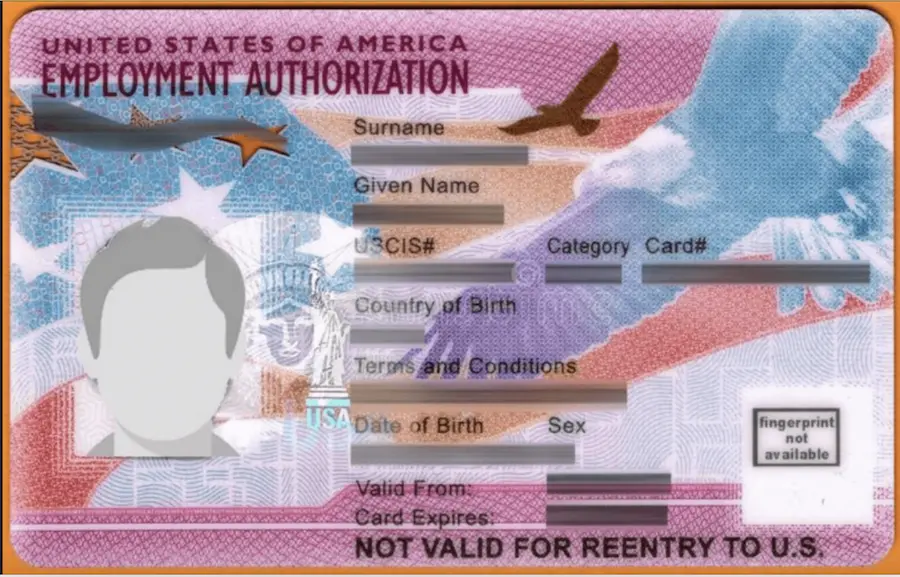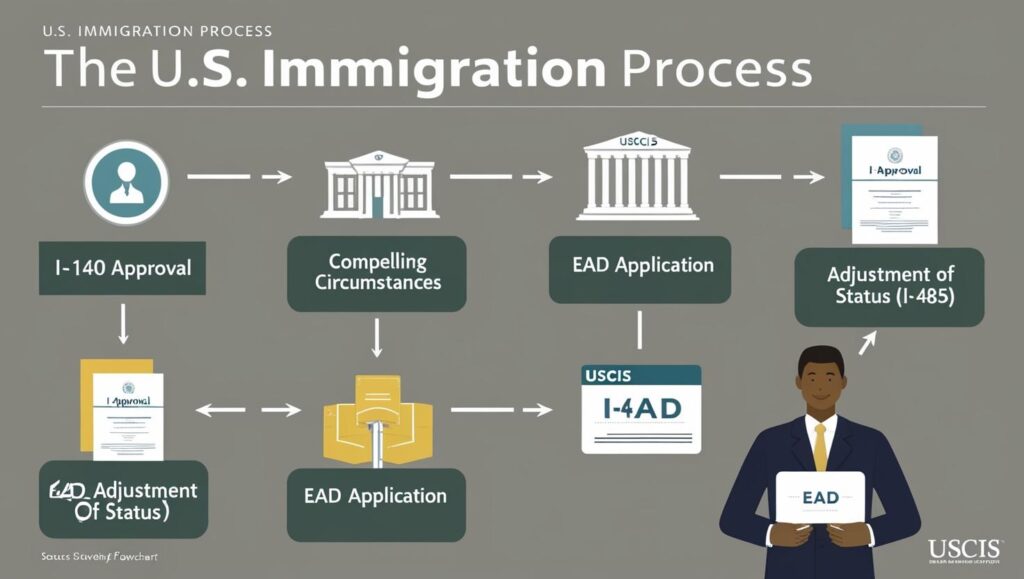Navigating the complexities of U.S. immigration can be daunting, especially when it comes to understanding the nuances of employment authorization. If you’ve recently had your I-140 petition approved, you might be wondering, ‘Can I get an EAD (Employment Authorization Document) now?’ This blog post will guide you through the process, eligibility criteria, and key considerations for obtaining an EAD after I-140 approval.
Understanding the I-140 Petition and Its Role
The Form I-140, also known as the Immigrant Petition for Alien Worker, is a critical step in the employment-based immigration process. This petition is filed by an employer on behalf of a foreign worker to classify them as eligible for an employment-based immigrant visa. Once the I-140 is approved, it signifies that the U.S. Citizenship and Immigration Services (USCIS) has recognized the worker’s qualifications and the employer’s ability to pay the offered wage.

What Happens After I-140 Approval?
An approved I-140 petition is a significant milestone, but it doesn’t automatically grant you the right to work in the United States. To work legally, you need an Employment Authorization Document (EAD). However, obtaining an EAD after I-140 approval depends on several factors, including your current immigration status, priority date, and whether you meet the criteria for a compelling circumstance EAD.
Compelling Circumstances and EAD Eligibility
In certain situations, USCIS may issue an EAD based on compelling circumstances. These circumstances must justify issuing temporary employment authorization to the beneficiary of an approved I-140 petition. Examples of compelling circumstances include serious illness, employer disputes, or significant disruptions in your ability to maintain nonimmigrant status.

How to Apply for a Compelling Circumstance EAD
To apply for an EAD based on compelling circumstances, you must file Form I-765, Application for Employment Authorization. Along with the form, you’ll need to provide evidence supporting your claim of compelling circumstances, such as medical records, termination letters, or other relevant documentation. USCIS will evaluate your application and determine whether your situation justifies issuing an EAD.
Concurrent Filing of I-140 and I-485
In some cases, you may be eligible to file Form I-140 and Form I-485 (Application to Register Permanent Residence or Adjust Status) concurrently. This option is available if your priority date is current according to the Visa Bulletin. Concurrent filing allows you to apply for an EAD while your adjustment of status application is pending, providing a pathway to work authorization during the green card process.
Benefits of Concurrent Filing
Concurrent filing offers several advantages, including the ability to remain and work in the United States while your green card application is processed. It also provides a streamlined process for obtaining an EAD, as you can file your application for employment authorization (Form I-765) along with your adjustment of status application.
Key Considerations for EAD Applications
When applying for an EAD, it’s essential to understand the eligibility criteria, required documentation, and processing times. USCIS evaluates each application on a case-by-case basis, so providing thorough and accurate information is crucial. Additionally, keep in mind that an EAD is typically valid for one year and must be renewed if you wish to continue working in the United States.
Maintaining Your Immigration Status
While waiting for your EAD or green card, it’s important to maintain your current legal status in the United States. This may involve extending your nonimmigrant status or ensuring that you meet the requirements for adjustment of status. Failure to maintain your status could jeopardize your eligibility for an EAD or green card.
Conclusion
Obtaining an EAD after I-140 approval is a complex process that requires careful planning and attention to detail. Whether you’re applying for a compelling circumstance EAD, filing concurrently with Form I-485, or navigating other pathways, understanding the requirements and options available to you is essential. By staying informed and working closely with your employer and legal counsel, you can successfully navigate the employment authorization process and achieve your immigration goals.

FAQs
Can I get an Employment Authorization Document (EAD) immediately after my I-140 is approved?
Not automatically. Generally, you can’t get an EAD solely based on an approved Form I-140. You typically need to file your I-485 (Adjustment of Status) application and wait for it to be pending for at least 180 days before you can apply for an EAD based on a pending I-485.
Are there any exceptions that allow me to get an EAD after I-140 approval without filing I-485?
Yes, there’s an exception for certain beneficiaries of approved employment-based immigrant visa petitions. If you face compelling circumstances that justify USCIS using its discretion to issue an Employment Authorization Document, you may be eligible to apply for an EAD without filing I-485.
What are considered “compelling circumstances” that might justify issuing an EAD after I-140 approval?
Compelling circumstances could include serious illness or disability, employer retaliation, significant harm to the applicant, or other situations that would justify USCIS using its discretion. These circumstances must be well-documented and truly exceptional.
Can I file the I-140 and I-485 concurrently to get an EAD sooner?
Yes, if your priority date is current based on the relevant Final Action Date in the Visa Bulletin, you can file your I-140 and I-485 concurrently. This allows you to also apply for an EAD as part of your I-485 application package.
How long does it take to get an EAD after filing the I-485?
Processing times vary, but typically it takes about 3-5 months from the date you file your application for EAD. However, USCIS processing times can fluctuate, so it’s best to check their website for current estimates.
If I have a previously approved I-140 but changed employers, can I still use it to apply for an EAD?
If you have a previously approved Form I-140 and you changed employers, you may still be able to use it for EAD eligibility if your new employer files a new I-140 petition that requires the same or similar job classification.
Can I apply for an EAD if I’m in O-1 nonimmigrant status with an approved I-140?
Being in O-1 nonimmigrant status doesn’t automatically make you eligible for an EAD. You would still need to meet the requirements for EAD eligibility, which typically involves having a pending I-485 or qualifying for the compelling circumstances EAD.
How can I prove that I have an approved I-140 when applying for an EAD?
You can use your Form I-797 Approval Notice for the I-140 as proof of approval. This document is issued by USCIS and serves as official confirmation of your approved visa petition.

